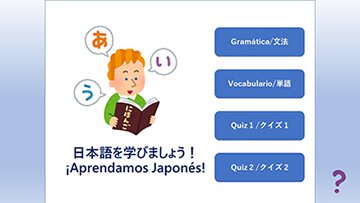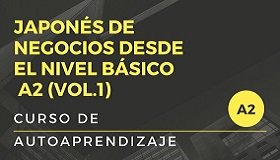Japanese-Language Education Continues Uninterrupted in the Face of the Pandemic in Mexico, Central America, and the Caribbean
The Japan Foundation, Mexico
SATO Goro, SATO Shiho
The Covid-19 Pandemic began spreading through Mexico, Central America, and the Caribbean in March 2020. Educational institutions were closed universally, and classes quickly shifted online. During these major changes, we at the Japan Foundation, Mexico (hereinafter “JF Mexico”) have continued our existing initiatives while trying to respond flexibly to local needs. In this report, I will introduce the new initiatives, and the results thereof, carried out under the pandemic as well as the results of our long-term initiatives.
1. Improving the Quality of Online Classes to Prevent Interruptions to Learning
Online classes were a new challenge for almost all Japanese-language teachers. To respond to this situation, I planned and implemented several new training series including a lecture series on the basics of carrying out online classes, and a practical introduction series where teachers could introduce their own initiatives. Each of these were well received, with a total of 1,094 people from 26 countries participating over a period of one year. This kind of result would only be possible through online training that removes the barriers of time and distance. We also held the “Online Teaching Materials Competition” to address the fact that there were few online Japanese-language teaching materials available for native Spanish speaking learners. A total of 23 entries were submitted to the contest, of which we chose the top three submissions for awards, as well as two more for judges’ special awards, through two rounds of judging. To our great surprise, the top award went to the submission of a learner studying on their own via the Japan Foundation’s “JF Japanese e-learning Minato” Japanese-language learning platform (https://minato-jf.jp/) (hereinafter “Minato”). The six submissions that made it past the preliminary screening can be downloaded from the JF Mexico website.
Meanwhile, the advent of these online classes also steadily brought to light the inherent problems with the approach. One such issue involved reports from teachers that there were students unable to participate in online classes due to the poor Internet infrastructure in their region or due to their family situation. In response, we prepared a handbook entitled “Manual of Japanese-Language Education Support for Areas with Undeveloped IT Environments” based on the methods teachers in those regions supported their students and released it on the JF Mexico website for anyone to download and use.

The winning submission to the Online Teaching Materials Competition
2. Completion of an “Minato” Original Course
The “Minato” consists of two main courses. One is the “Self-Study Course” that allows students to learn entirely on their own, while the other is the “Tutor Support Course” in which a teacher provides additional support via live lessons. JF Mexico has been running the Tutor Support Course for self-learners in the Spanish speaking countries of Central and South America since 2017. As of the end of March 2021, the number of people from Mexico who have registered in the Minato course is the highest in the world, at 41,758. This number is over three times the 13,673 learners studying at Japanese-language educational institutions in Mexico according to the Survey on Japanese-Language Education Abroad 2018 by the Japan Foundation. Also, if you include other regions, the number of Spanish speakers studying the Japanese language on their own online is likely even higher.
Given these numbers, JF Mexico began creating an original course using the Spanish as the medium in October 2019 to accelerate the provision of Japanese-language learning opportunities to more Spanish speakers. Demand and interest in the Japanese language is rising particularly in Mexico with the entry of Japanese companies into the domestic market, so we chose business Japanese as the theme of the course. We finally launched the course, entitled “Japanese Language for Beginners through Business (A2) Vol. 1 Tutor Support Course,” one year later in October 2020. Students of the course, including those working at Japanese companies and those hoping to do so in the future, had fun as they learned over the approximately one month with teacher support. By the end, many students shared their satisfaction with the course, saying that they were able to learn the proper manners and how to speak in business situations, as well as helpful grammar and culture for working at Japanese companies.
Thus, the benefit of the “Tutor Support Course” is the ability to learn through interaction between students and teacher. Unfortunately, due to limitations in the timing and number of participants, we have yet to realize our goal “to accelerate the provision of Japanese-language learning opportunities to more Spanish speakers”. Accordingly, we rearranged the course as a “Self-Study Course” so that anyone could study it at any time, which we launched in March 2021. We are also currently working on the sequel to the course, Vol. 2. My hope is that learners of the Japanese language online will be able to encounter a wider range of Japanese through the “Minato” and enjoy their studies even more.

A panel from the Japanese Language for Beginners Through Business (A2) Vol.1 Tutor Support Course
The transition to online courses has brought both merits and demerits for Japanese-language teachers and learners. With the impact of the Covid-19 pandemic expected to continue for the time being, I intend to continue planning and implementing ways to ensure everyone has access to opportunities for learning.
- What We Do Top
- Arts and Cultural Exchange [Culture]
- Japanese-Language Education Overseas [Language]
- Japanese-Language Education Overseas [Language] Top
- Learn Japanese-language
- Teach Japanese-language
- Take Japanese-Language Test
- Know about Japanese-language education abroad
- The Japanese-Language Institute, Urawa
- The Japanese-Language Institute, Kansai
- Japanese-Language Programs for Foreign Specified Skilled Worker Candidates
- Japanese Language Education for Japanese Children Resident Overseas and for the Descendants of Migrants
- Archives
- Japanese Studies and Global Partnerships [Dialogue]
- JF digital collection
- Other Programs / Programs to Commemorate Exchange Year
- Awards and Prizes
- Publications
